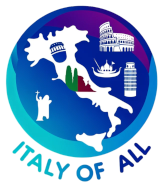The province of Prato, located in the Tuscany region of Italy, is known for its vibrant textile industry, rich cultural heritage, and historical significance. Situated just north of Florence, Prato has developed from a medieval textile hub into a modern city while retaining its distinct historical character and cultural traditions.
Geographically, Prato is nestled between the Montalbano hills and the plain of the Bisenzio river, providing a mix of industrial areas and lush, scenic landscapes. The proximity to major Tuscan cities like Florence has influenced Prato’s development and integration into the central Italian economic and cultural fabric.
Historically, Prato’s origins date back to the Etruscan period, but it gained prominence in the Middle Ages as a center for wool processing and textile production. This legacy continues to define the city, with its economy heavily rooted in the textile sector. Prato’s historical center, characterized by its medieval walls and buildings, including the Emperor’s Castle (Castello dell’Imperatore) and the beautiful Cathedral of Santo Stefano, highlights the city’s medieval and Renaissance past.
Culturally, Prato embraces its history while fostering a modern cultural identity. The city is known for its multicultural population, with a significant Chinese community that has contributed to the textile industry since the late 20th century. This blend of Italian and immigrant cultures has created a unique social fabric. Prato is also home to several museums and cultural institutions, such as the Textile Museum, which reflects its industrial heritage, and the Luigi Pecci Center for Contemporary Art, which showcases modern artistic expressions.
Cuisine in Prato is typically Tuscan, with a focus on simple, flavorful ingredients. Local specialties include the famous ‘cantucci di Prato’ (almond biscuits typically dipped in Vin Santo), and ‘mortadella di Prato’, a spiced pork sausage that is distinct from the more widely known Bologna mortadella. The area is also known for its use of farro (spelt) in soups and salads, reflecting the broader agricultural practices of the region.
Economically, Prato’s economy has traditionally been centered around the textile industry, which has faced challenges due to globalization and competition from abroad. In response, the city has diversified its economic base to include logistics, machinery, and services, while still maintaining its status as a significant textile producer, particularly in high-end and specialty fabrics.
Despite challenges such as economic diversification and integration of its diverse population, Prato is actively engaged in enhancing its cultural offerings and promoting sustainable urban development. Efforts to revitalize its historical sites and expand cultural tourism are key components of its strategy to bolster economic growth and community cohesion.
Overall, the province of Prato offers a fascinating blend of industrial heritage, cultural diversity, and historical depth. Its commitment to preserving its unique identity while adapting to contemporary challenges ensures its continued importance as a dynamic and evolving region in Tuscany.
Comuni in Prato Province:
